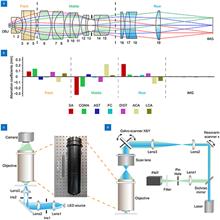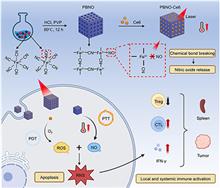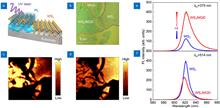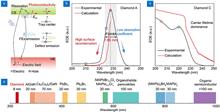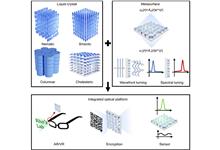 View fulltext
View fulltext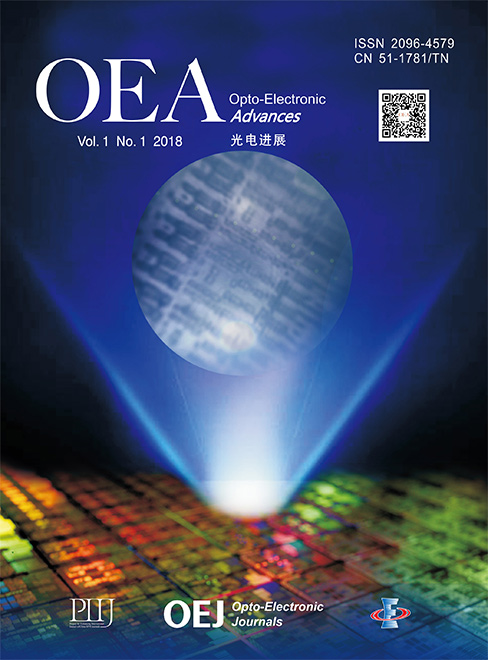
Conventional microscopes designed for submicron resolution in biological research are hindered by a limited field of view, typically around 1 mm. This restriction poses a challenge when attempting to simultaneously analyze various parts of a sample, such as different brain areas. In addition, conventional objective lenses struggle to perform consistently across the required range of wavelengths for brain imaging in vivo. Here we present a novel mesoscopic objective lens with an impressive field of view of 8 mm, a numerical aperture of 0.5, and a working wavelength range from 400 to 1000 nm. We achieved a resolution of 0.74 μm in fluorescent beads imaging. The versatility of this lens was further demonstrated through high-quality images of mouse brain and kidney sections in a wide-field imaging system, a confocal laser scanning system, and a two-photon imaging system. This mesoscopic objective lens holds immense promise for advancing multi-wavelength imaging of large fields of view at high resolution.
Photothermal and photodynamic therapies (PTT/PDT) hold promise for localized tumor treatment, yet their full potential is hampered by limitations such as the hypoxic tumor microenvironment and inadequate systemic immune activation. Addressing these challenges, we present a novel near-infrared (NIR)-triggered RNS nanoreactor (PBNO-Ce6) to amplify the photodynamic and photothermal therapy efficacy against triple-negative breast cancer (TNBC). The designed PBNO-Ce6 combines sodium nitroprusside-doped Prussian Blue nanoparticles with Chlorin e6 to enable on-site RNS production through NIR-induced concurrent NO release and ROS generation. This not only enhances tumor cell eradication but also potentiates local and systemic antitumor immune responses, protecting mice from tumor rechallenge. Our in vivo evaluations revealed that treatment with PBNO-Ce6 leads to a remarkable 2.7-fold increase in cytotoxic T lymphocytes and a 62% decrease in regulatory T cells in comparison to the control PB-Ce6 (Prussian Blue nanoparticles loaded with Chlorin e6), marking a substantial improvement over traditional PTT/PDT. As such, the PBNO-Ce6 nanoreactor represents a transformative approach for improving outcomes in TNBC and potentially other malignancies affected by similar barriers.
Two-dimensional (2D) transition metal dichalcogenides (TMD) are atomically thin semiconductors with promising optoelectronic applications across the visible spectrum. However, their intrinsically weak light absorption and the low photoluminescence quantum yield (PLQY) restrict their performance and potential use, especially in ultraviolet (UV) wavelength light ranges. Quantum dots (QD) derived from 2D materials (2D/QD) provide efficient light absorption and emission of which energy can be tuned for desirable light wavelength. In this study, we greatly enhanced the photon absorption and PLQY of monolayer (1L) tungsten disulfide (WS2) in the UV range via hybridization with 2D/QD, particularly titanium nitride MXene QD (Ti2N MQD) and graphitic carbon nitride QD (GCNQD). With the hybridization of MQD or GCNQD, 1L-WS2 showed a maximum PL enhancement by 15 times with 300 nm wavelength excitation, while no noticeable enhancement was observed when the excitation photon energy was less than the bandgap of the QD, indicating that UV absorption by the QD played a crucial role in enhancing the light emission of 1L-WS2 in our 0D/2D hybrid system. Our findings present a convenient method for enhancing the photo-response of 1L-WS2 to UV light and offer exciting possibilities for harvesting UV energy using 1L-TMD.
Recently, an extreme narrowband spectral response of only 8 nm in electronic-grade diamond-based photodetectors has been observed by Zheng Wei and his colleagues from Sun Yat-sen University for the first time. A charge collection narrowing mechanism assisted by free exciton radiative recombination is proposed, which well reveals the characteristic spectral response of diamond.
Metasurfaces have opened the door to next-generation optical devices due to their ability to dramatically modulate electromagnetic waves at will using periodically arranged nanostructures. However, metasurfaces typically have static optical responses with fixed geometries of nanostructures, which poses challenges for implementing transition to technology by replacing conventional optical components. To solve this problem, liquid crystals (LCs) have been actively employed for designing tunable metasurfaces using their adjustable birefringent in real time. Here, we review recent studies on LC-powered tunable metasurfaces, which are categorized as wavefront tuning and spectral tuning. Compared to numerous reviews on tunable metasurfaces, this review intensively explores recent development of LC-integrated metasurfaces. At the end of this review, we briefly introduce the latest research trends on LC-powered metasurfaces and suggest further directions for improving LCs. We hope that this review will accelerate the development of new and innovative LC-powered devices.







